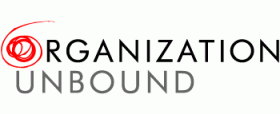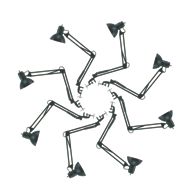-
This post is brought to you by the boundless curiosity of Alex Megelas, whose original interview with Anne Bertrand led Anne and I to a thought-provoking three-month email exchange. This is the first of several posts exploring some of the interesting nuggets from our conversation.
“Is it possible that creativity in arts organisations not be limited to the gallery space?”
Anne Bertrand has been flirting with this question for as many years as I have known her. When we first met almost a decade ago, she was asking it from a place of frustration. She had spent several years working for an artist-run organization and was feeling quite disheartened as a result. How can it be, she would say to me in exasperation, that so many art organizations are run like machines? How is it that artists, who claim to be such creative free-spirits, so often end up creating organizational cultures that are practically void of this spirit?
A few years later, in 2004, Anne became a coordinator at Skol, a non-profit art gallery in Montreal that supports emerging and experimental art practices. In this position, her orientation to these questions became more generative as she began to experiment with ways of bringing an artistic state-of-mind to organizational life.
What if Skol was itself a work of art? What would it look like to take an artistic approach to managing accounts, running meetings, writing funding applications, greeting visitors when they walk through the door, or building a culture of trust and responsibility? How could the daily organizational life of Skol generate the kind of artistic pleasure that comes from creating, from making something new, from making something happen?
Pondering these kinds of questions wasn’t simply an intellectual exercise for Anne. Lived experience was what she was after. She wanted to create a work environment that would feed her and her colleagues as artists and as whole people, rather than as mere functionaries. And of course she wanted to do this while continuing to maintain a commitment to top-notch programming. She also believed that Skol’s members were interested in having a more holistic relationship with the organization- to see the gallery not solely as an instrument to help them achieve notoriety, but as a vital community space where they can connect to their peers, learn from each other, and feel validated as artists.
Skol’s experiments in expressive organization have taken many forms over the years. Much like the process of making art, the staff seem to be approaching organizational life as a constant dance between design and emergence. They have moved away from pre-determined schedules and towards more organic and participatory approaches to planning, they run their daily activities in a way that is less rote and procedural, and they have challenged traditional role boundaries, as Anne describes here:
Everyone takes turns working the reception desk. For many years, it was a position held by an intern because regular staffers were too “busy” to take time out from their workday to spend the afternoon chatting with visitors, answering questions, and talking about the exhibitions. Taking turns allows us to stay connected with our audiences and pay attention to their astute comments and body language; visitors are always surprised when they learn that the coordinator also takes a turn invigilating on Saturdays too.
Skol has also taken a more expansive approach to their programming:
Skol has slowly moved away from acting as a venue for the quick succession of object and installation-based exhibitions, toward supporting projects that can cross-over into other realms of human activity. We are contributing to a change in how the art world perceives the figure of the artist, not as a the solitary genius figure but one engaged in a variety of activities – education, research, information sciences, activism, community work – activities centered less on the production of objects than on the sharing and circulation of knowledge. We are presently in that transition with periodical moments of floundering and other bursts of what I shamelessly call The Sublime.
In many ways, Skol is exploring the space where art becomes organization and organization becomes art.
The visuals accompanying this post are works of Anne Bertrand herself who produces assemblages composed of materials collected from everyday life and chosen for their forms colors and rhythmic motifs.
What if an art gallery was itself a work of art?





8 Responses and Counting...
It’s about time that curators put their money where their mouth is!
Thanks for the article folks. I wanna know more about the Sublime!
The feeling of euphoria of taking part in an open, profoundly indeterminate situation produced with the confidence that something will happen…and struggling with the doubt and fear that nothing will happen. And then, something surprising happens that eludes explanation, that goes against what is already known and defined. Art that is not yet established as art but that produces a form that the brain just can’t dismiss as it struggles to process what it’s experiencing. There were a few fleeting moments like this in my last 2 years at Skol that renewed my faith in the potential of indetermination when it is given a chance to unleash its power… i.e. letting go of need to control and know. That to me is sublime.
The idea that we could live our lives as works of art it a plunge into the debate about objective reality. We can only be the true seers of our own selves, everything else seen by everybody else is left to their sole objective reality. I believe I have observed a true artist move through life, making every function of their existence a formality, a custom, and an opportunity to display grace and spontaneity. I think these are values we can work towards, however difficult they might be to continually uphold. The thing is, creative production comes in many segments for me as an artist: the rush of the original idea; the brainstorming of possibility; the early work and mock-ups, the extra-ordinarily slow and quiet process of drawing and inking many hours without seeing results; the slow ghost of a result taking shape; the major portion of the result standing in front of me either measuring up to my original ‘vision’ or being off target, the acceptance or rejection of the piece as an addition to my ‘body of work’ or sideline into the file ‘oeuvre en progres’… So during all these phases, my mind is doing entirely different tasks. Empathy and compassion, they are not at the forefront when I’m trying to figure out dimensions or construct images in my head… But when I am in the laborious part, where hours and hours are spent on the tiniest details, then MY MIND GOES TO THE END OF THE UNIVERSE and back, and there is no preparation for this state. Some of my best ideas for other projects have landed in my ear during these periods… entire relationship issues have been sown up or burned to the ground in my head during this period. But what’s more, great stretches of mind watching, mindful awareness and deep reflection comes during this stage. Once the work is done, I really have to say, my attachment is almost zero and I want to be doing the next thing. So to stay compassionate and open to those who’ve just arrived to see my work for the first time, is another consideration. What’s more, the idea that we could share beauty and will smiles to the eyes of children, is a privilege and spectacle in and of itself. I don’t know what motivates most people, but for me, it is the knowledge that I am engaged with what I am doing, it is benefiting others, and I can see the accomplishments myself, all the while having positive dynamic exciting relationships and staying in a decent mood/state of mental health.
So cool to have a window into your creative mind. It’s interesting to think about how the process you experience might translate to the process of running an arts organization….particularly because organizational life is a collective rather than solitary experience.
I think we tend towards control because of fear, the fear that creating a space for emergence will lead to chaos.
It stands to reason that organizations that promote art be themselves artistic. Then they will be authentic, because they are themselves perfect examples of what they are promoting – they have become the change they seek in the world. This I believe applies to all kinds of organizations, especially social purpose ones. How do we become what we say or do? How do we become not just messengers but the message? That is the the real art, the transformative art.
Very thoughtful. I find this initiative, and others like it, hopeful, since the way we have been invited to “view” art for so long is not very meaningful. Re-imagining ways that we work and live together can also be a way to infuse life into relationships with those that are closet us and those we serve. Thanks for the article Tana, and for introducing me to Anne Bertrand and the practice at Skoll.
You’re most welcome. So happy it found you : )